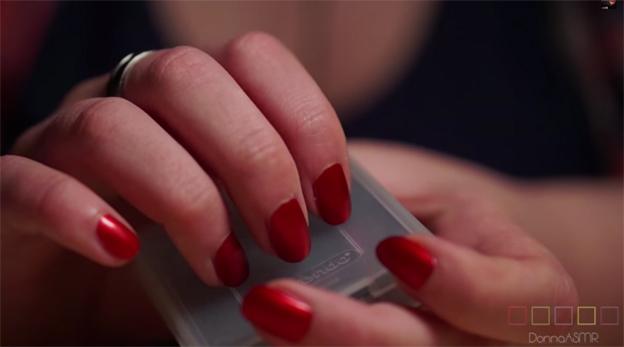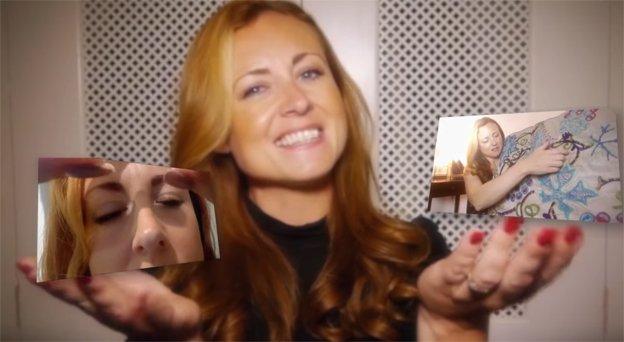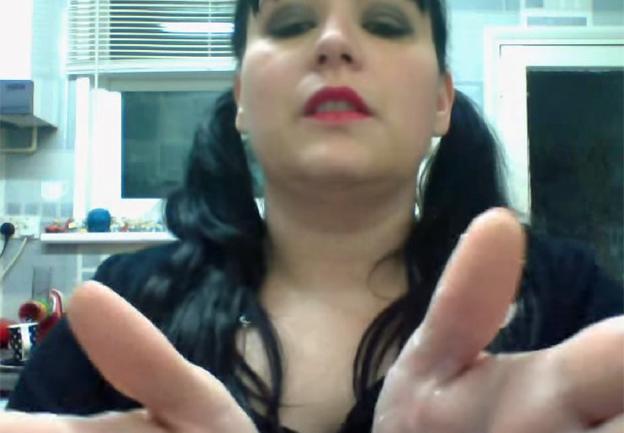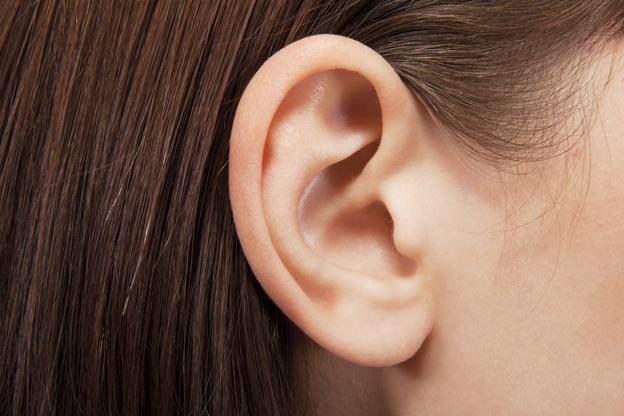ASMR: The videos which claim to make their viewers 'tingle'
- Published

ASMR videos - which claim to induce a tingling feeling in the viewer - have quietly become an internet phenomenon.
When I was a child I sometimes experienced a pleasant physical sensation in my scalp when I was especially intrigued or fascinated by something, or when being touched or stroked in certain ways.
The sensation continued into adulthood, but when I tried to explain what I was feeling to other people I was met with baffled looks and a quick change of subject.
Recently I discovered that other people have similar experiences, and that the sensation has a name, ASMR, and tens of thousands of videos dedicated to it.
Type the initials into the search box on YouTube and you'll get 1.5 million results. Most direct you to the work of dozens of "ASMR artists", making videos in their front rooms and back rooms, garden sheds and kitchens. And some of those videos are staggeringly popular.
At first glance it's hard to see why. Why would you want to watch 18 minutes of a woman demonstrating ways to fold towels and napkins, external? Yet in two years that video has had 770,000 views.

There are ASMR videos of polished fingernails tapping on a plastic surface, external, of someone scrunching up plastic packaging, external, of people being given massages, of performers whispering to camera. There are people pretending to be doctors giving the viewer a "cranial nerve exam", and others pretending to cut your hair, pretending to give you a job interview or pretending to be a hotel receptionist at check-in (that one lasts 41 minutes, and has had 460,000 views).
The ASMR search term also throws up clips from a 1980s US television series in which the artist Bob Ross teaches the viewer how to paint, external, dabbing his brush on to the canvas as he quietly explains what he's doing.
What all these videos have in common is that watching them triggers - in a minority of people - a particular sensation in their scalp, best described as a buzzing or tingling. It's warm, relaxing and extremely pleasurable.
The initials stand for Autonomous Sensory Meridian Response. It sounds a vaguely scientific term, though there's no science behind it and it's not clear who coined it. It resembles the goose bumps or frisson some people get from listening to certain kinds of music, but its causes are different and it feels different.
The doyenne of video-makers is arguably a blonde woman with an eastern European accent who calls herself Maria GentleWhispering.
Her "Oh such a good 3D-sound ASMR video, external", which lasts 16 minutes and features several different sound effects designed to trigger the response, is the most popular I've been able to find with a staggering 7.6 million views in a little over two years, despite its pretty dreadful sound quality.
It's not clear where she's based, though it seems likely to be the US, where there's a flourishing ASMR subculture.
I tracked down two video-makers in the UK. The first, Emma, calls herself WhispersRedASMR on YouTube, where she has over 40,000 subscribers.
She lives on the outskirts of London, where she makes videos in a tiny shed at the end of her garden. In them she talks slowly and hypnotically to camera in a very soft voice, while making gentle sounds with props ranging from books to Velcro, or while pretending to clean the viewer's ears (yes, really).
And the sound quality on her videos is much better than Maria GentleWhispering's, especially if you listen on headphones. Emma uses a pair of binaural microphones, spaced the same distance apart as a person's ears, which give the listener an especially immersive experience.
She first encountered the sensation (she calls it a "crinkling in my head") as a child and listed for me the situations that triggered it: "An eye test, a haircut... at school when the teacher read a story or wrote on the blackboard... when one of the other children read a story... doing our times tables, standing beside the teacher when she was going through my work... children playing with my hair.

WhispersRedASMR, a UK-based video-maker
"We'd sit in a circle and play with each other's hair and tickle each other's backs - all those nice nurturing things we used to do as children, they triggered my ASMR."
She first started watching videos when she was having trouble sleeping and was looking for something on YouTube to help calm her down. She discovered what she calls the "ASMR community", started an online group called ASMR UK and began making videos herself so that the other members would know who she was.
Her target audience is adults, but she's recently started making videos specifically aimed at children as well, in response to requests from viewers. Her videos, like those of many other practitioners, carry advertising which generates a modest income.
Laura Stone also started watching videos when she was having difficulty sleeping, and suffering nightmares and panic attacks after a death in the family. For her too, watching them led to an interest in making them. "I wanted to help people like they helped me," she says.
She makes her videos - sometimes as many as three a day - in her Essex home. The front room is full of props she's planning to use - a doll with long, blonde hair for hairdressing scenarios, some noisy jewellery, a back scratcher, a sheet of wrapping paper. Most of her videos are "role-plays", although several involve her long-suffering boyfriend (that's where the back-scratcher comes in) and some even feature her mother.
The feedback, she says, has been very positive. "People say I help them sleep. Lonely people who don't have many friends or don't go out, they feel I'm their friend."

Still from Laura Stone's "ASMR gentleman's shave role play" video
And she still finds watching other people's videos helpful: "Sleep is 100% improved when I watch videos, to the point where if I don't watch a video I don't sleep as well."
When I suggest that indicates she's addicted to them, she concedes that could be true. "A little bit addicted, but it's a good addiction, a healthy addiction, there's a lot worse. Anxiety-wise, it does definitely calm me down. If I'm experiencing a panic attack, watching a video for five minutes I feel all my anxiety symptoms fading, and then within 10 minutes I'm calmer." And watching videos, she says, is preferable to being on medication.
That worries Frances McGlone, professor of neuroscience at Liverpool John Moores University. I contacted him because I hoped he might be able to explain the mechanism which produces such a distinctive physical reaction from such a diverse range of stimuli. He couldn't, because no-one has researched the question. "In a quick look on the more respected search engines for published scientific research I couldn't find anything that supported a neurobiological basis for why these sensory experiences should be provoked by observing these ASMR videos," he tells me.

Strange sounds in the Magazine


But he is profoundly sceptical of their use as a kind of home-brewed alternative therapy: "What worries me is susceptible individuals who want to believe this kind of thing because they really have problems and need some kind of psychological help - that is where I get a little bit annoyed, because people can be led up the garden path by techniques that clearly are snake oil, and do not and will not provide any long term benefit for an underlying condition."
He also points out that most of these videos are presented by attractive-looking women, perhaps implying that there may be an erotic element in their appeal. And indeed, some have tried to promote the term "braingasm" as an alternative name for ASMR. On the other hand, the sensation, though undeniably pleasurable, doesn't seem to have anything to do with sex.
For the time being then, ASMR is something of a mystery. But thanks to the internet, I now know that I'm not alone, and that others too experience the same thing. There's just one problem - with few exceptions, YouTube's "ASMR videos" don't actually trigger my own ASMR.
Hear Nick Higham's report on ASMR videos on BBC Radio 4's Today programme, on 11 December 2014
Subscribe to the BBC News Magazine's email newsletter to get articles sent to your inbox.